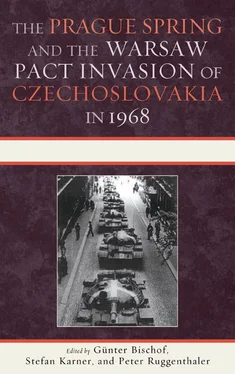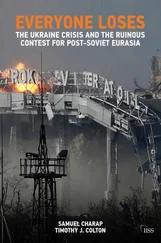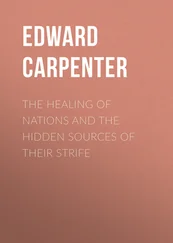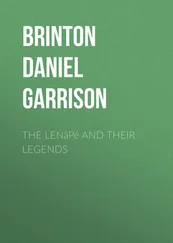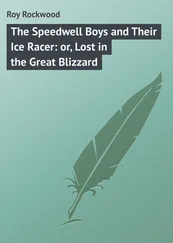90. RGANI, F. 3, op. 72, d. 193, pp. 45, 71–73.
91. RGANI, F. 3, op. 72, d. 193, p. 74.
92. RGANI, F. 3, op. 68, d. 862, pp. 69–74, materials on the Politburo resolution of the CC CPSU, 16 August 1968, “On the Situation in Czechoslovakia”; Kirilenko’s reports, 15 August 1968, with attachment; the materials that had been prepared by the commission were concerned particularly with the inadequacy of Soviet international propaganda concerning the results of the negotiations in Čierná nad Tisou and Bratislava. At the same time, the Czechoslovak diplomats considered the results of these negotiations as a victory for themselves. This assessment was shared by many western Communist parties. The leader of the Austrian CP, Franz Muri, told the bourgeois weekly Wochenpresse that the negotiations had shown the Austrian Communist Party’s opinion to be correct that the international Communist movement could not be regarded as “a monolithic block.” RGANI, F. 3, op. 68, d. 862, pp. 69–74.
93. RGANI, F. 3, op. 68, d. 862, pp. 16–19.
94. RGANI, F. 3, op. 68, d. 862, pp. 13–15. Konstantin Chernenko was chairman of the Presidium of the Supreme Soviet and Soviet president of state from 1984 to 1985.
95. Navrátil, The Prague Spring 1968 , 324–25.
96. RGANI, F. 3, op. 72, d. 196, pp. 111–12, Politburo resolution of the CC CPSU P 94 (128), “On the Directives to the Vice UN Secretary General, Comrade Kutakov, on U Thant’s Planned Trip to Czechoslovakia,” 16 August 1968, reprinted in Karner et al., Dokumente , #60.
97. RGANI, F. 3, op. 72, d. 197, pp. 3–6, Politburo resolution of the CC CPSU P 95 (I), “On the Question of the Situation in Czechoslovakia,” 17 August 1968, reprinted in Karner et al., Dokumente , #62.
98. Unintelligible formulations which were designed to keep events shrouded in secrecy as much as possible were not the only means to prevent information about the beginning of the military intervention in Czechoslovakia from spreading. More than seventy staff members of the party apparatus of the CC CPSU, who were involved in varying degrees of intensity in the preparations of the meeting and in the meeting in Moscow, had to formally commit themselves to speak to no one under any circumstances whatever about “what they heard or seen on 18 August in the House of Receptions on the Lenin Hills.”
99. RGANI, F. 3, op. 68, d. 874, p. 27, materials on the session minutes of the Politburo of the CC CPSU, 17 August 1968, “On the Situation in Czechoslovakia,” draft of a Politburo resolution of the CC CPSU.
100. RGANI, F. 3, op. 68, d. 874, pp. 74, 86.
101. RGANI, F. 3, op. 72, d. 198, p. 18, Politburo resolution of the CC CPSU P 96 (III), 19 August 1968, reprinted in Karner et al., Dokumente , #65; RGANI, F. 3, op. 72, d. 198, p. 38, Politburo resolution of the CC CPSU, P 96 (1), 19 August 1968, reprinted in Karner et al., Dokumente , #166.
102. Even though changes, such as the classification of the paper Student as a rightist publication or the change in the role ascribed to Czechoslovak mass media in the reporting on the meetings in Čierná nad Tisou and Bratislava were really rather minor in character; the request of the “Czechoslovak friends” to delete the phrase “The counterrevolutionary forces are gathering signatures to have the Communist Party liquidated” bear witness to one of two options: one, that Moscow was harboring basic misconceptions as to the situation in the ČSSR; or two, that it was set to fan existing partisanship in order to justify the impending military intervention. RGANI, F. 3, op. 68, d. 874, p. 112, materials on the resolution of the Politburo of the CC CPSU, “On the Telegram to the Soviet Ambassador in the ČSSR,” 16 August 1968.
103. RGANI, F. 3, op. 68, d. 874, p. 11, materials on the resolution of the Politburo of the CC CPSU, 16 August, 1968, “On the Telegram to the Soviet Ambassador in the ČSSR”: cipher telegram from Chervonenko in Prague of 17 August 1968.
104. Officially, many of these resolutions were passed almost ten days later, on 27 August; in many cases, there were no so-called voting slips, which would make it possible to tell who from the ranks of the senior Soviet leadership had at least seen the document in question.
105. The action plan that the group of “trustworthy persons in the CC KSČ” had committed themselves to fulfill on condition of the guarantee that the invasion of Czechoslovakia was going to take place in the night of 20/21 August and that Brezhnev had reported on in so much detail at the meeting of the Warsaw Five on 18 August, turned out as completely illusory in practice—not a single one of its points was realized. It is obvious that there were several people present at the meeting in Moscow who doubted that everything was going according to plan. Brezhnev himself admitted at the end of the meeting, when he answered a number of questions from Eastern European leaders by saying that “there are several things we do not see clearly either.” RGANI, F. 10, op. 1, d. 246, p. 50.
106. Imre Nagy (1896–1958), in October–November 1956, was the head of the revolutionary government of Hungary and of the Politburo of the Central Leadership of the Hungarian Workers’ Party (USAP). After the suppression of the Hungarian Revolution in November 1956, he was arrested by the Soviet troops who had occupied Budapest and was sentenced to death in June 1958. Mátyás Rákosi (1892–1971) was a Hungarian politician. He was dismissed in July 1956 from his post of first secretary of the USAP, and he subsequently emigrated to the USSR, where he remained to his death as a political refugee without the right to return to Hungary. Nikos Zachariadis (1903–1973) was a Greek politician. He was secretary-general of the CC of the Greek CP until 1956, then in political exile in the USSR and, like Rákosi, committed suicide in 1973. Both Rákosi and Zachariadis were kept in the USSR against their will, first, because the new political leaders of the Communist parties in Hungary and Greece requested it and, secondly, because Moscow feared the parties might split—the influence and the authority of the two leaders who had fallen from grace remained considerable for a long time. For details, see, for example, Csaba Békés, “The 1956 Hungarian Revolution and World Politics,” CWIHP Working Paper 16 (1996); Janós Rainer, Imre Nagy, Vom Parteisoldaten zum Märtyrer des Hungarian Volksaufstandes, Eine politische Biographie, 1896–1958 (Paderborn: Schöningh, 2006); Jan Foitzik, Entstalinisierungskrise in Ostmitteleuropa 1953–1956: Vom 17. Juni bis zum Ungarischen Volksaufstand: Politische, militärische, soziale und nationale Dimensionen (Paderborn: F. Schöningh, 2001); Erwin Schmidl, ed., Die Ungarnkrise 1956 und Österreich (Vienna: Böhlau, 2002); Csaba Békés et al., eds., The 1956 Hungarian Revolution: A History in Documents (Budapest: Central European University Press, 2002); Paul Lendvai, Der Ungarnaufstand 1956: Eine Revolution und ihre Folgen (Munich: Bertelsmann, 2006).
107. RGANI, F. 3, op. 72, d. 198, p. 8.
108. Navrátil, The Prague Spring 1968 , 324–25.
109. RGANI, F. 10, op. 1, d. 246, p. 37, “Minutes of the Talks of the CPSU with the Fraternal Parties,” 24 August 1968, reprinted in Karner et al., Dokumente , #109.
110. The meeting gave rise to a remarkable exchange between Kosygin and Gomułka. In reply to Gomułka’s vehemently advanced opinion that the Communist Party had virtually ceased to exist in Czechoslovakia, Kosygin said there must still be such a thing as a Communist Party. To make his point, he resorted to a strange and rather controversial argument: “It is true that we have had a very difficult situation in Czechoslovakia for the past few days—yet the workers in the factories have not stopped working; no one takes to the street. Surely that means that there is someone who still controls the working class; therefore, the Party cannot be said to have virtually ceased to exist in Czechoslovakia.” RGANI, F. 10, op. 1, d. 247, p. 30, stenographic minutes of the meeting of the Interventionist Coalition in Moscow, 24 August 1968, reprinted in Karner et al., Dokumente , #109.
Читать дальше
